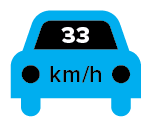
Greater Brisbane key corridors performance July-December 2018
Greater Brisbane road network
This report provides information on the traffic volume and average speed for the Greater Brisbane key transport corridors over the July to December 2018 period. The corridors include Brisbane City Council (Council) and Department of Transport and Main Roads (TMR) managed roads. Network summaries are presented in vehicle kilometres travelled (VKT) and average network speeds. The report includes information on initiatives being undertaken by both organisations to manage congestion on the road network.
Report findings
There are 38 key corridors, comprising 317.2 km of road, in the Greater Brisbane area. Council manages 18 of these corridors, equating to 102.1km of road and TMR manages the other 20, equating to 215.1 km of road.
Network vehicle kilometres travelled slightly decreased compared to the same period last year.
| Peak average network speed details | Speed |
|---|---|
Weekday AM peak average network speed is 33 km/h:
|  |
Weekday PM peak average network speed is 36 km/h:
| 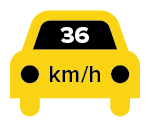 |
The following data highlights the busiest and least busy corridor within the Greater Brisbane area in terms of traffic volume. Bruce Highway (managed by TMR) is the busiest corridor with an average volume of 163,592 vehicles per day.
- Logan Road between Klumpp Road and Old Cleveland Road (managed by Council) is the least busy corridor with 20,533 vehicles per day.
- The following data emphasises the month in which the lowest and highest average speed was recorded for the AM and PM peaks.
- In the AM peak, October had the lowest average speed at 30 km/h, while December had the highest average speed at 39 km/h.
- In the PM peak, October had the lowest average speed at 34 km/h, while December had the highest average speed at 39 km/h.
- The following data highlights the corridors which recorded the highest and lowest average speeds in the AM and PM peaks.In the AM peak:
- Centenary Motorway between Logan Motorway and Ipswich Motorway (managed by TMR) had the fastest average speed at 89 km/h (100 km/h speed limit)
- Stanley Street (managed by Council) had the slowest average speed at 18 km/h (speed limit is 60 km/h with a school zone speed of 40 km/h on this corridor)
- In the PM peak:
- Centenary Motorway between Logan Motorway and Ipswich Motorway (managed by TMR) had the fastest average speed at 96 km/h (100 km/h speed limit)
- Stanley Street (managed by Council) had the slowest average speed at 22 km/h (60 km/h speed limit in the PM Peak).
The following data makes a comparison of the average speeds for both the AM and PM peaks with the results of the same period in 2017.
- On Council’s 18 key corridors, compared with the same period in 2017:
- AM peak average speed decreased by 2.7% from 28 km/h to 27 km/h
- PM peak average speed decreased by 1.4% from 33.4 km/h to 32.9 km/h.
- On 18 of TMR’s 20 key corridors (excluding Pacific Motorway (1) and (2)), compared with the same period in 2017:
- AM peak average speed decreased by 1.6% from 39 km/h to 38 km/h
- PM peak average speed decreased by 2.3% from 38 km/h to 37 km/h.
Compiled by Council, with data and analysis jointly undertaken by Council and Department of Transport and Main Roads. Incident data provided by the Brisbane Metropolitan Transport Management Centre (BMTMC).

Greater Brisbane key corridors
The volume and speed of the 38 key corridors in the current reporting period (July – December 2018) is compared with the same period in the previous year (2017). All traffic volume data takes into account both directions of travel. It includes weekdays only and excludes public holidays. Traffic volumes on TMR’s corridors were taken at the road segment with the highest volume. Council corridor traffic volumes were taken in the middle segment of the corridors.
The average daily traffic volume for the month is the number of vehicles utilising the corridor per day, averaged over all weekdays of the month (excluding public holidays).
AM peak period for TMR corridors is from 6am to 9am as the TMR network is utilised earlier, particularly on the outer edges of the Greater Brisbane road network (for example, the Bruce Highway and the Pacific Motorway). AM peak period for Council corridors is from 7am to 9am. PM peak periods are the same for both TMR and Council corridors, 4pm to 7pm. The monthly AM and PM peak per hour traffic volumes are the average hourly volume for the month over the corresponding AM and PM peak periods, respectively.
Note:
Speed data was not available for Pacific Motorway (between Brisbane CBD and Gateway Motorway) and Pacific Motorway (between Beenleigh and Gateway Motorway) during the July – December 2018 period. The routes were excluded from the network vehicle kilometres and network speed summary charts.
Volume data for December 2018 was not available for Pacific Motorway (between Beenleigh and Gateway Motorway). An adjustment was made in the network and route calculations.
Table: Greater Brisbane Key Corridors July to December 2018
Network vehicle kilometres travelled summary
Average vehicle kilometres travelled on 38 key corridors by month.
Traffic volume and vehicle kilometres travelled
Definitions:
Vehicle kilometres travelled (VKT) is a measure of traffic demand on the road network. It is the length of a section of road in kilometres multiplied by the average traffic volume on that section. The daily VKT is the product of the length of the road and average daily traffic (ADT). The monthly VKT is the daily VKT multiplied by the number of weekdays in the analysis period.
The AM peak monthly VKT is the product of the length of the road, the average AM peak hourly traffic volume and number of weekdays in the analysis period.
The PM peak monthly VKT is the product of the length of the road, the average PM peak hourly traffic volume and number of weekdays in the analysis period.
The network VKT is the sum of all the corridors in the network.
Table: Greater Brisbane network vehicle kilometres travelled July to December 2017 to 2018
The following table includes data on the Vehicle Kilometres Travelled (VKT) within the Brisbane road network for a 6-month period and for individual months. Readers can use the dropdown menu to change between Brisbane City Council, TMR or Greater Brisbane (all) key corridors.
Average network speed summary
Average speed of 38 key corridors
Definitions:
Average speed in kilometres per hour is a measure of traffic efficiency on the road network. Average speed is calculated using travel times collected from TMR’s and Council’s extensive network of Bluetooth scanners within the Greater Brisbane road network. Average corridor speed includes delays at signalised intersections. Average travel times were collected during the AM and PM peak periods to calculate the average speed of the corridor. Peak periods are similarly defined as in the VKT calculations. AM peak travel time is taken as the inbound direction while the PM peak travel time is the outbound direction.
Table: Greater Brisbane network average speed July to December 2017 to 2018
The following table includes data on the average speed in KM/HR within the Brisbane road network for a 6-month period and for individual months. Readers can use the dropdown to change between Brisbane City Council, TMR or Greater Brisbane (all) key corridors.
State Government Congestion Initiatives
Transport and Main Roads (TMR) has a number of policies, strategies and projects that are addressing traffic congestion and journey reliability in Greater Brisbane, including those listed below.
- Travel options and travel information – creating a public transport and active transport network that has greater accessibility, frequency and reliability (ongoing funding of the principal cycle network, QLDTraffic website and smartphone app, 131940 phone service, real-time bus information, enhanced train timetable). QLDTraffic was launched in February 2017, providing dynamic and real-time travel information through a new website https://qldtraffic.qld.gov.au/ and a smartphone app.
- The award-winning MyTranslink app allows users to personalise “Favourites” and track services in real-time. The smartphone app http://translink.com.au/mytranslink has over 200,000 active users each month.
- Improved incident management including traffic response units (with Council).
- Smart Motorways operations (for example, ramp signalling, Ipswich Motorway Lane Use Management and Variable Speed Limit operations).
- Increased capacity – there have been significant projects to address the growing traffic demands on the road network such as M1/M3 Gateway merge, Gateway Upgrade North and Ipswich Motorway.
M1/M3 Gateway merge upgrade
TMR is working to alleviate congestion on the Pacific Motorway between Eight Mile Plains and Rochedale.
The M1/M3 Gateway merge upgrade includes:
- widening up to five southbound motorway lanes between Eight Mile Plains and Rochedale South (Exit 19)
- relocation of the existing bus entry from the Eight Mile Plains Bus Station onto the Pacific Motorway to south of Underwood Road
- construction of the new four-lane Underwood Road bridge to replace the existing overpass, scheduled to be opened to traffic in mid-2019. Construction includes piling for the new bridge foundations, which commenced in September 2018, and installation of bridge girders will be installed from late January until late February 2019.
- managed motorway technologies from Klumpp Road to Rochedale Road in both directions.
This project will reduce congestion, improve travel time reliability for motorway and public transport users, increase freight efficiency and improve safety.
The $190 million upgrade is jointly funded by the Australian Government ($115 million) and the Queensland Government ($75 million).
The M1/M3 Gateway merge commenced construction in April 2018 and is scheduled for completion in mid-2020.
This project is Stage 1 of the M1 Masterplan (Gateway to Logan Motorways) which is being delivered in priority stages as funding becomes available.
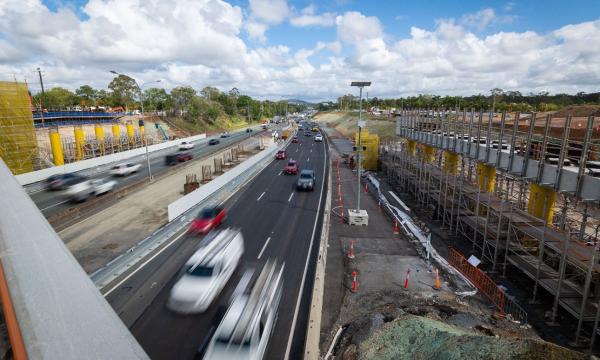
Gateway Upgrade North (GUN)
Major construction is now complete on the Gateway Upgrade North project, with the widened motorway officially commissioned in March 2019.
This $1.143 billion project will ease congestion and improve safety on one of Queensland’s busiest motorways. Once completed, the project from Nudgee to Bracken Ridge will increase capacity and freight efficiency along this important corridor.
Carrying more than 83,000 vehicles a day, the Gateway Motorway experiences high levels of congestion. The project will improve travel time reliability, safety and connectivity, increasing the efficiency of the Gateway Motorway.
This project will upgrade the motorway from four to six lanes between Nudgee and Deagon, with additional pavement rehabilitation and safety works through to Bracken Ridge. It also includes:
- reconfiguring the Nudgee interchange including a new Nudgee Road overpass
- widening of the Deagon Deviation to two lanes in each direction between Depot and Bracken Ridge Roads
- the provision of a grade-separated interchange between the Gateway Motorway and the Deagon Deviation at Deagon
- construction of a new off-road cycle path connecting to local networks.
Major construction activities commenced in early 2016 and final works are underway along the project, with the widened motorway now open to three lanes in each direction from Nudgee to Deagon. The project is expected to be completed in early 2019.
The Gateway Upgrade North project is jointly funded by the Australian Government ($914.18 million) and Queensland Government ($228.54 million) on an 80:20 split. The upgrade is being delivered by TMR, with Transurban Queensland engaged to assist in managing the delivery of the major works package.
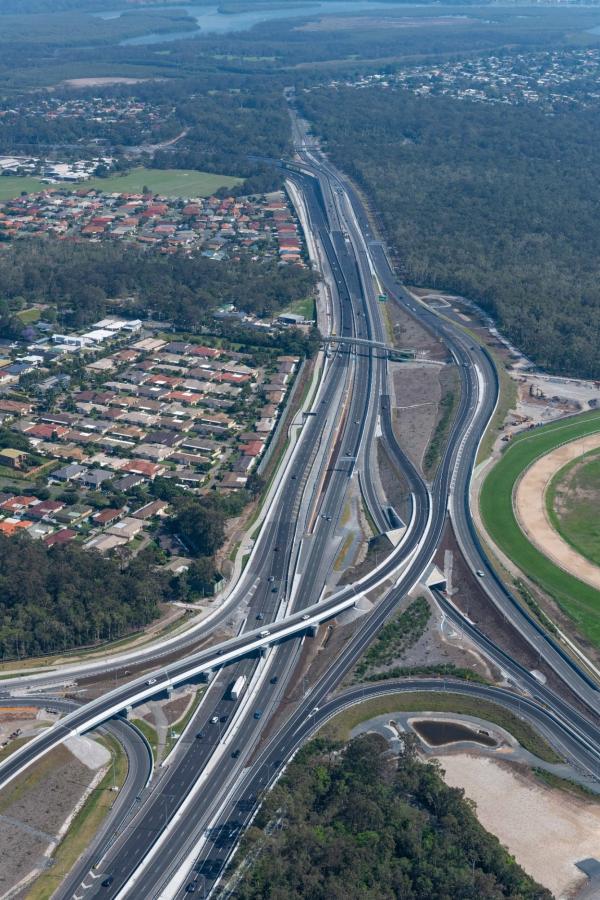
Ipswich Motorway Upgrade: Rocklea to Darra – Stage 1 project
The Ipswich Motorway Upgrade: Rocklea to Darra – Stage 1 project (R2D – stage 1) is a $400 million project jointly funded by the Australian and Queensland governments, with each contributing $200 million.
The project covers the 3 km section from Granard Road, Rocklea to east of Oxley Road, Oxley. This is the most critical section of the remaining 7 km of the motorway still to be upgraded. Upgrading the remaining 4 km of the Ipswich Motorway, between Oxley Road and the Centenary Motorway, is still a priority, but subject to available funding.
The local community and businesses will benefit from the upgrade through improved road safety and better local connectivity. Motorists on this section of the Ipswich Motorway will also benefit from improved traffic flow and improved flood immunity.
Works on this section now includes:
- upgrading the motorway from four to six lanes
- seven new higher bridges over Oxley Creek
- new 1.5 km Boundary Road Connection linking Boundary Road, Rocklea across the Oxley Creek floodplain to the intersection of Blunder and Boundary Roads, Oxley
- new northern service road connection over the Oxley Creek floodplain
- new active transport facilities on the northern service road
- new traffic signals at the Suscatand Street intersection and Boundary/Factory Roads intersection.
Works will be staged to effectively manage the upgrade of the motorway while under live traffic conditions.
Construction commenced late October 2017 and is expected to be completed late 2020.
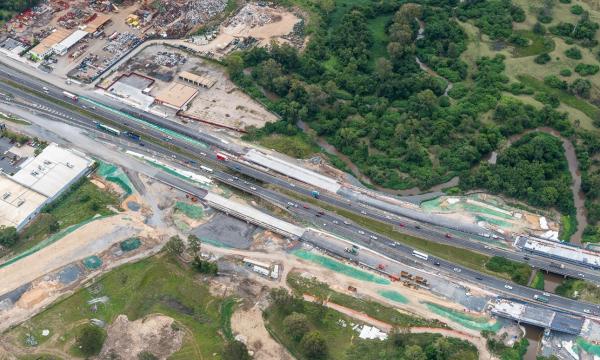
Logan Enhancement Project (financed and delivered by Transurban Queensland)
Transurban Queensland’s $512 million Logan Enhancement Project includes widening sections of the Logan and Gateway motorways, improving key congestion hot spots (Logan Motorway/Mount Lindesay Highway/Beaudesert Road interchange and the Wembley Road/Logan Motorway interchange) and constructing new south-facing ramps on the Gateway Motorway at Compton Road.
The project will improve safety and travel time reliability, enhance connectivity to key residential and business areas, and help future proof the network by:
- widening the Logan Motorway between Mount Lindesay Highway and Wembley Road interchanges, with a minimum three lanes in each direction
- widening the Gateway Motorway between Compton Road and the Logan Motorway interchange, to provide three lanes in each direction
- widening Wembley Road to two lanes in each direction between Pagewood Street and Greenfern Drive
- upgrading the Mount Lindesay Highway/Beaudesert Road interchange to remove traffic conflict points and weave movements to improve road user safety and the efficiency of the interchange
- upgrading the Logan Motorway and Wembley Road interchange, providing new on and off-ramps
- upgrading the Gateway Extension Motorway interchange at Compton Road, providing new south-facing on and off-ramps.
The project is the first Market-Led Proposal to be approved in Queensland being delivered at no cost to the Queensland Government. To fund these upgrades, there will be a moderate increase to truck tolls on the Logan and Gateway Motorways that will take effect once construction is completed in 2019 and the benefits of the project start to be realised.
CPB Contractors, a member of the CIMIC Group, completed detailed design in early 2017 and began major construction in June 2017.
The project is supporting 1300 direct jobs during construction and will generate approximately $1.2 billion in economic benefits for Queenslanders over 30 years by unlocking the economic potential of the Logan region as well as the business and freight hubs in Brisbane’s north and west.
As of January 2019, construction is 80 per cent complete with more than 2.2 million hours worked. The project remains on schedule for completion in 2019.
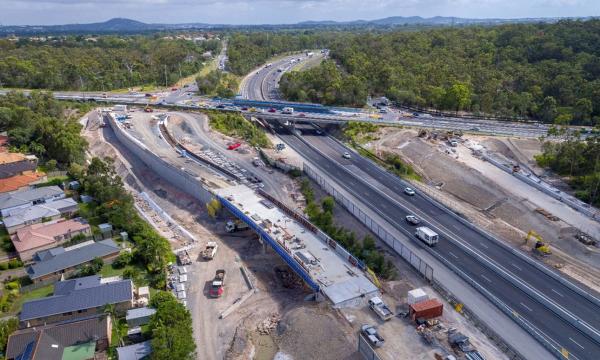
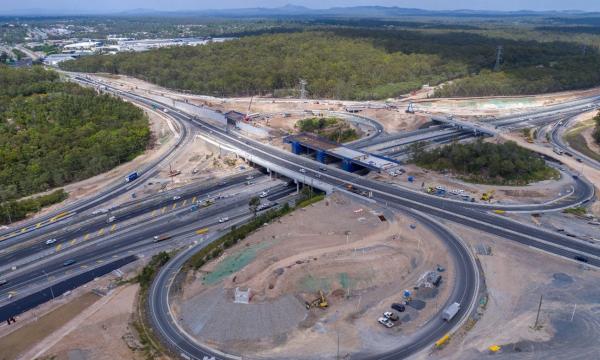
Council congestion initiatives
Council is committed to reducing congestion and improving safety and access across the city through a network-wide focus on traffic improvements to meet current and future traffic volumes along Brisbane’s key corridors.
This aligns with Council’s Transport Plan for Brisbane – Strategic Directions that will guide the evolution of our transport network over the next 25 years and beyond.
A range of significant projects are delivered by Council to improve access to transport network, including major road construction and intersection upgrades. Council is also working to minimise traffic congestion and improve safety in local areas by constructing intersections, conducting corridor upgrades and delivering minor road projects.
Some of the major projects are profiled below.
Profile: Green Camp Road corridor upgrade
Council commenced the Green Camp Road corridor upgrade, between Manly Road and Rickertt Road, in mid-May 2018. The upgrade is jointly funded by Council and the Australian Government through the Department of Infrastructure and Regional Development.
The $27.7 million project, anticipated for completion in mid-2019, will improve safety by upgrading and signalising the Green Camp Road and Tilley Road intersection, and by improving the layout and alignment of the Green Camp Road and Rickertt Road intersection. The project will also reduce travel times along Green Camp Road for general traffic and buses by widening the existing road from two to four lanes.
The upgrade will improve safety for road users, reduce traffic congestion and improve travel time reliability along the corridor. Once completed, the upgrade will enhance the ability for Green Camp Road to fulfil its role as an arterial road in the east Brisbane network.
Features of the upgrade include:
- providing a minimum of two through lanes in each direction on Green Camp Road from Manly Road to approximately 180 metres past the Rickertt Road intersection
- providing three through lanes on the Green Camp Road northbound carriageway adjacent to the Tilley Road intersection
- signalising the Green Camp Road and Tilley Road intersection including widening the Tilley Road approach to provide one left-turn lane and one right-turn lane
- providing two through lanes on Rickertt Road in each direction for 200 metres from the Green Camp Road intersection
- widening the Rickertt Road approach to provide a separate left-turn lane and two right-turn lanes
- raising the road level and upgrading the existing culverts under the Green Camp Road and Tilley Road intersection to improve drainage and flood immunity to a one per cent annual exceedance probability (one in 100 year probability of a flood occurrence)
- providing on-road cycle lanes and off-road shared paths
- providing fauna crossing facilities, fauna fencing and wildlife awareness zones
- providing improved pedestrian footpath connections
- a new car park 250 metres north of the Green Camp Road and Tilley Road intersection for visitors to Green Camp Road Park
- landscaping treatments.
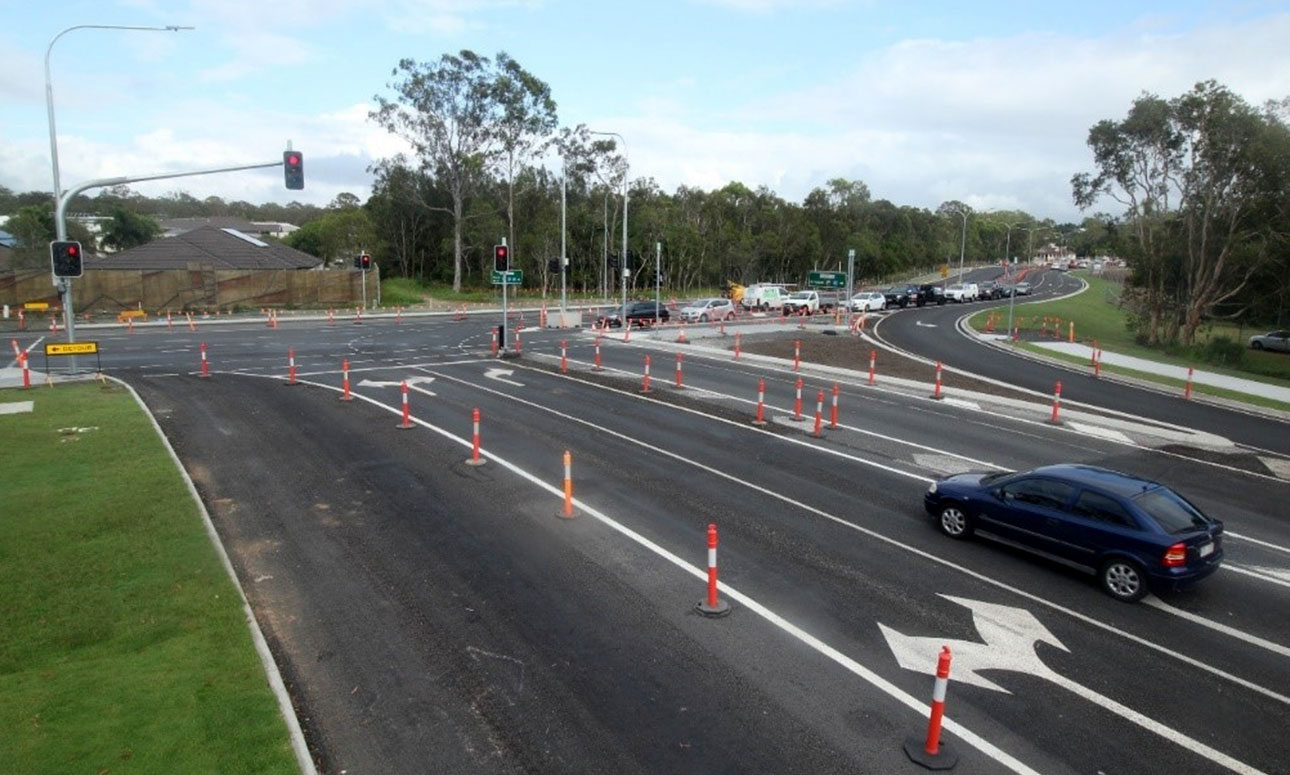
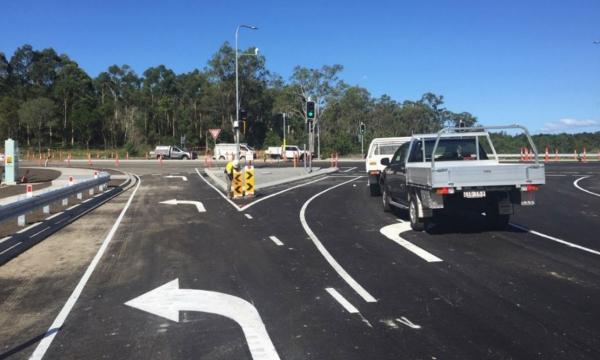
Profile: Murphy Road and Ellison Road intersection upgrade
Brisbane City Council is upgrading the Murphy Road and Ellison Road intersection at Geebung. The upgrade commenced in December 2018 and is anticipated for completion in early 2020, weather and construction conditions permitting.
The Murphy Road corridor is an important route in Brisbane’s road network, providing access between suburban and commercial catchments in the northern suburbs.
The existing roundabout at Murphy Road and Ellison Road is currently operating at capacity in the morning peak and overcapacity in the evening peak, with long delays and queues on the southern and northern approaches. Congestion through the intersection is expected to increase without intervention.
Between 2011 and 2015, TMR’s WebCrash database reported 11 crashes at the Murphy Road and Ellison Road intersection, five crashes at the Murphy Road and Kittyhawk Drive intersection and two crashes at the Murphy Road and Butt Street intersection.
The Murphy Road and Ellison Road intersection upgrade project is a key part of Council’s commitment to reduce traffic congestion, improve travel times and increase safety for all road users, and will cater for future traffic demands along this busy corridor.
The project includes replacing the existing roundabout at Murphy Road and Ellison Road with a signalised intersection. Murphy Road will be widened from two to four lanes from the Gympie Road intersection to north of the Butt Street intersection. The Kittyhawk Drive and Murphy Road intersection will be upgraded to cater for future traffic flows and improve the road alignment. The Butt Street and Murphy Road intersection will be signalised to improve safety for pedestrians and vehicles accessing Butt Street.
The upgrade also involves:
- provision of a three-lane southbound approach on Murphy Road
- widening Ellison Road to four lanes between Danette Street and Gambia Street
- upgrading the Kittyhawk Drive and Murphy Road intersection to include additional through lanes in each direction, a right-turn pocket into Kittyhawk Drive and a U-turn facility for southbound traffic
- signalisation of the Butt Street and Murphy Road intersection to include a pedestrian crossing, a right-turn pocket into Butt Street, and a new mini roundabout at the intersection of Butt Street and Fernlea Street to enhance traffic movements for residents
- provision of additional off-road car parking adjacent to Marchant Park and 7th Brigade Park
- inclusion of on-road cycle lanes in both directions on Murphy Road and Ellison Road
- conversion of Marathon Street and Blackwood Road to left-in, left-out access only to improve safety
- provision of right-turn pockets on Ellison Road for westbound traffic into Coolah Street and Gambia Street
- construction of a new access road to Navarre Street
- provision of indented bus stops adjacent to the Murphy Road and Ellison Road intersection
- landscaping and line marking treatments.
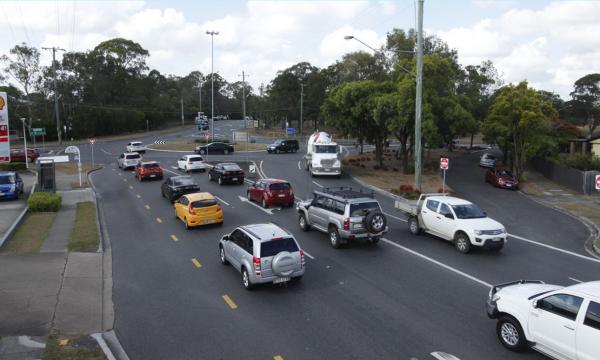
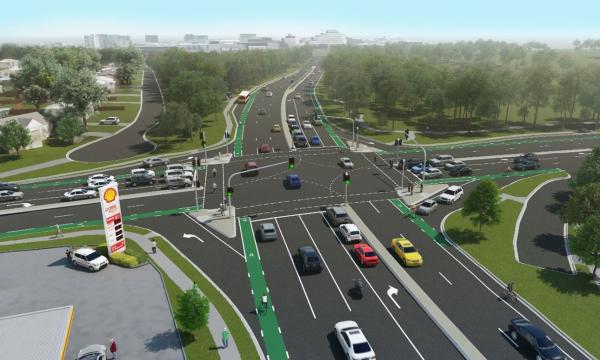
Profile: Parakeet Street and Partridge Street intersection upgrade, Inala
Brisbane City Council is upgrading the Parakeet Street and Partridge Street intersection at Inala to improve safety for all road users. The project is being funded through the Australian Government’s 2018-19 Black Spot Program, which aims to reduce the risk of crashes on Australian roads.
Works started in February 2019 and are expected to be completed by mid-2019.
This intersection recorded five crashes from 2011 to 2018 that resulted in either hospitalisation, medical treatment or minor injury. The majority of crashes were due to drivers failing to obey the give way signs on Parakeet Street.
The intersection upgrade will improve safety by installing a new roundabout to control traffic flow and improve visibility. New traffic islands, kerb build outs and kerb ramps will be installed to improve pedestrian safety.
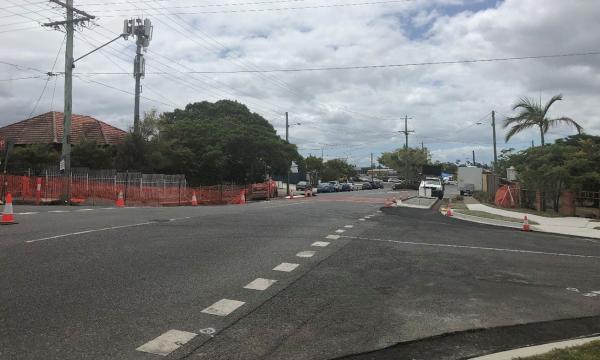
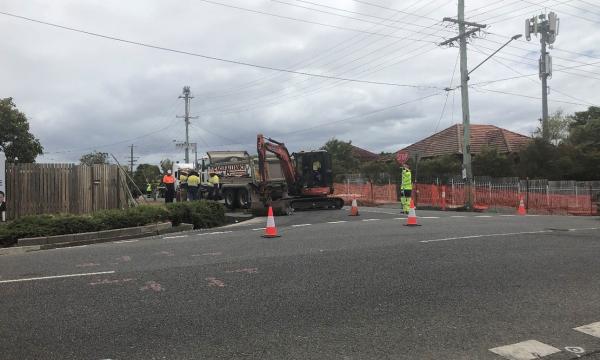
Profile: Warrigal Road, Bellmead Street and Plum Street intersection upgrade, Runcorn
Council is upgrading the Warrigal Road, Bellmead Street and Plum Street intersection in Runcorn. The upgrade will improve access and safety in the area for all road users.
The busy Warrigal Road provides connectivity to Fruitgrove Station, Warrigal Square and Runcorn Plaza shopping centres, and Warrigal Road State School. Currently, a high level of congestion on Warrigal Road hinders access into and out of Bellmead Street and Plum Street, particularly during the morning and afternoon peaks.
The intersection upgrade includes:
- the installation of traffic signals
- the widening of Warrigal Road from one to two lanes in each direction in the vicinity of the intersection
- the provision of signalised crossings for pedestrians and cyclists
- the installation of new two metre wide shared pedestrian and cycle paths
- resurfacing, new line marking and landscaping treatments.
The project is jointly funded by Council and the Australian Government as part of the Roads to Recovery (R2R) program. Construction started in March 2019 and is expected to be completed by mid-2019, weather and construction conditions permitting.
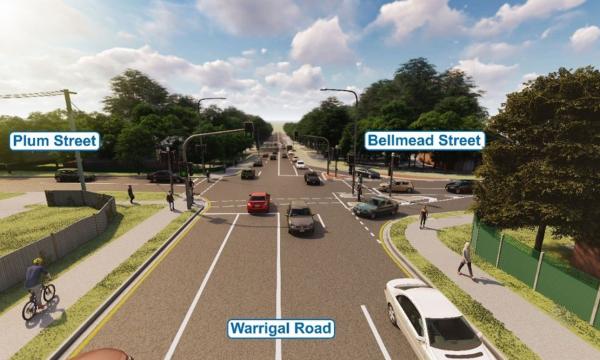
Profile: Gailey Road and Sir Fred Schonell Drive intersection upgrade
Council is upgrading the Gailey Road and Sir Fred Schonell Drive intersection in St Lucia, to extend and fully control the right-turn from Gailey Road to Sir Fred Schonell Drive.
The upgrade will improve the safety and efficiency of the intersection which has experienced a relatively high crash rate in recent years, with 19 crashes* recorded between 1 January 2010 and 31 December 2017.
Works will include upgrading footpaths on Gailey Road south of the intersection.
The busy intersection provides connectivity to the University of Queensland, Toowong Village Shopping Centre and St Lucia Golf Links.
The project includes:
- the extension of the right-turn lane on Gailey Road into Sir Fred Schonell Drive
- the upgrading of the existing traffic signals to provide a fully controlled right-turn from Gailey Road and Sir Fred Schonell Drive
- minor road widening
- the construction of a retaining wall on the western side of Gailey Road
- installation of a new footpath and kerb ramps
- the relocation of the inbound bus stop on Gailey Road
- the provision of new line marking and landscaping treatments
- Seven trees have been identified for removal on the western side of Gailey Road that will be replaced with 88 trees planted in the local area where appropriate and in accordance with Council’s offset policies.
The project is jointly funded by Council and the Australian Government as part of the Australian Government’s Roads to Recovery (R2R) program. Construction starts in April 2019 and is expected to be completed by mid-2019, weather and construction conditions permitting.
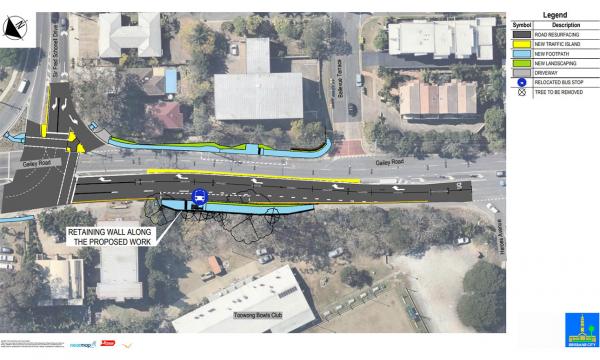
Congestion Busting Projects
Brisbane City Council’s Congestion Busting Projects (CBP) deliver low-cost, high-impact projects to reduce traffic congestion across Brisbane.
These projects use reputed traffic signal intersection modelling software, SIDRA (Signalised and unsignalised Intersection Design and Research Aid), as the primary decision-making tool to determine the value for money of the project works undertaken.
The following case studies look at two types of CBP. The first type reconfigures existing road space by making changes to line markings, medians and signage. The second type involves the provision of additional road space on the network through minor road widening and lengthening.
CASE STUDY: Road space reconfiguration
Example: Beenleigh Road at Bonemill Road, Runcorn
Beenleigh Road is an arterial road and an important link between other major arterials such as Beaudesert Road, Mains Road and Logan Road. It extends through several suburbs in the south of Brisbane, connecting many residential, commercial and industrial estates over its length of approximately nine kilometres.
Beenleigh Road, Bonemill Road, and Datura Street form a four-way signalised intersection and carries approximately 25,000 vehicles per day and 2,000 vehicles per hour in both the AM and PM peaks.
It was determined that the congestion caused by the turning demand from Beenleigh Road into Bonemill Road could be addressed by providing an additional left-turn lane and the extension of the right-turn lane.
Beenleigh Road was realigned to accommodate a left-turn lane and a 30 metre extension of the right-turn lane.
This low-cost, high-impact project was delivered in September 2018.
The project has resulted in a 2% improvement in travel time for motorists passing through this intersection every day in the PM peak.
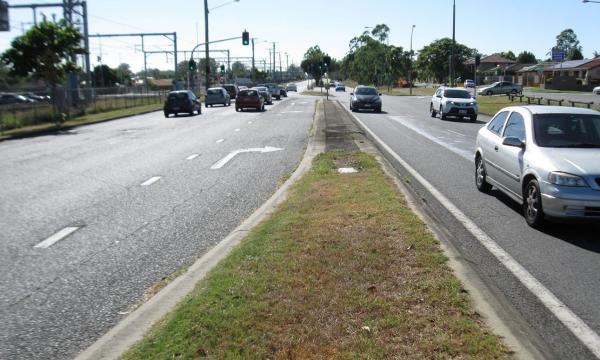
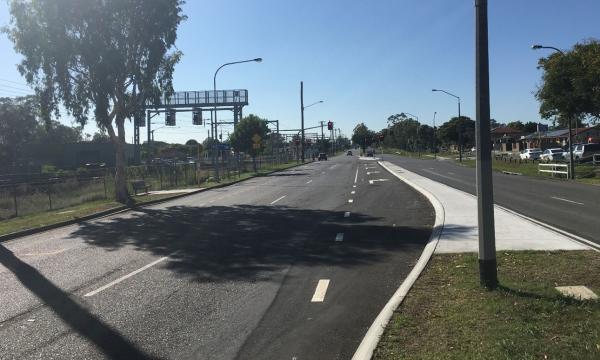
CASE STUDY: Additional road space construction
Example: Sherwood Road at Abercrombie Street, Rocklea
Sherwood Road is an arterial road between Ipswich Road and Oxley Road, and a district road from Oxley Road to Dewar Terrace, servicing residential, commercial and industrial properties in Rocklea and Sherwood. It is also an important link between other major arterials such as Ipswich Road, Oxley Road and Fairfield Road, and a primary freight route between Ipswich Road and Jerrold Street.
The Sherwood Road, Fairfield Road and Ipswich Road intersection is a four-way signalised intersection carrying approximately 45,000 vehicles per day, 11% of which are heavy vehicles, and an average of 4,000 vehicles per hour in the AM peak. Approximately 1,000 of these vehicles are approaching the intersection from the west of Sherwood Road.
In the AM peak, there is a very high right-turn demand from Sherwood Road into Ipswich Road. Most of the right-turning traffic was queuing in the shared lane due to the capacity of the dedicated right-turn lane being exceeded.
To address this congestion and safety concern, Council extended the right-turn lane on Sherwood Road at Ipswich Road by converting Abercrombie Street into left-in left-out while providing a dedicated right-turn lane at Sperling Street as alternate access for local traffic.
The project has resulted in a 16% improvement in travel time for motorists passing through this intersection every day in the AM peak, and 11% for the PM peak.
This combined, high-impact project was delivered in September 2018.
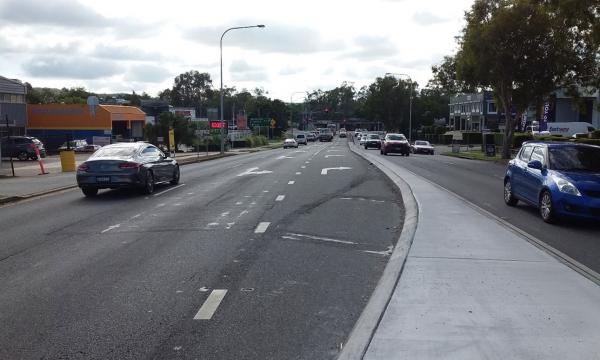
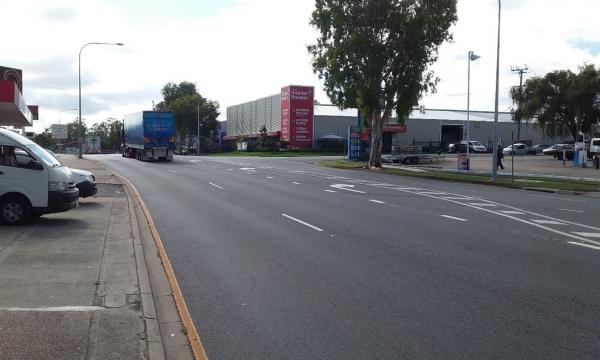
Congestion Busting Projects July to December 2018
The following projects were completed within this reporting period.
Street location | Suburb | Project description | Completed |
|---|---|---|---|
Beenleigh Road at Bonemill Road | Runcorn | Provision of a left-turn lane from Beenleigh Road into Bonemill Road by extending the right-turn lane from Beenleigh Road into Datura Street and realigning the traffic lanes on the west approach to the intersection. | Sep 2018 |
| Mains Road at Beenleigh Road | Sunnybank | Extend right and left-turn lanes on the northern approach to Mains Road. | Oct 2018 |
| Sherwood Road at Abercrombie Street | Rocklea | Remove the right-turn into Abercrombie Street and extend the right-turn lane from Sherwood Road into Ipswich Road and provide a new right-turn lane into Sperling Street. | Oct 2018 |
| Yallambee Road at Curragundi Road | Jindalee | Provision of a right-turn lane from Yallambee Road into Curragundi Road | Jul 2018 |
Factors affecting network performance
Traffic volume and travel times are also affected by other factors, including traffic incidents. These incidents, such as accidents, extreme weather and planned events, influence the amount of congestion experienced on the roads. Depending on the timing, location, severity and duration, an incident may have minimal effect on the road network or cause gridlock in large parts of the city.
Specific incidents can have a greater impact on the road network. Emergency works, for example, water main repairs on the Bruce Highway, can have a significant impact on the average incident clearance times, and hence the journey times. Incidents that require emergency service attendance can take up to four hours to clear, depending on the severity and location of the incident.
There are also locations within the city that are particularly susceptible to excess congestion when a minor incident happens. Examples of these include Hale Street and Merivale Street.
The BMTMC continue to proactively manage the impacts of incidents as they happen to minimise effects on residents, businesses and travellers within Greater Brisbane. The data detailed in this report specifically analysed significant unplanned incidents that had the potential to have a major impact on the road network. BMTMC collected and compiled this incident data for roads throughout the Greater Brisbane metropolitan area.
Significant incident data
This data is a collection of traffic crashes, hazards and stationary vehicles that impacted the road network and includes the number of incidents and average time it took before the incident was cleared and normal network conditions restored. These are defined as unplanned incidents. It does not cover planned events/roadworks, alerts, congestion incidents, or quick clearance towing for TMR and Council clearway towing.
Range of durations of significant incidents
This graph shows the range of durations* in minutes of significant incidents.
* Incident duration is measured from the time BMTMC is notified about the incident until the time the incident is resolved (cleared from the road).